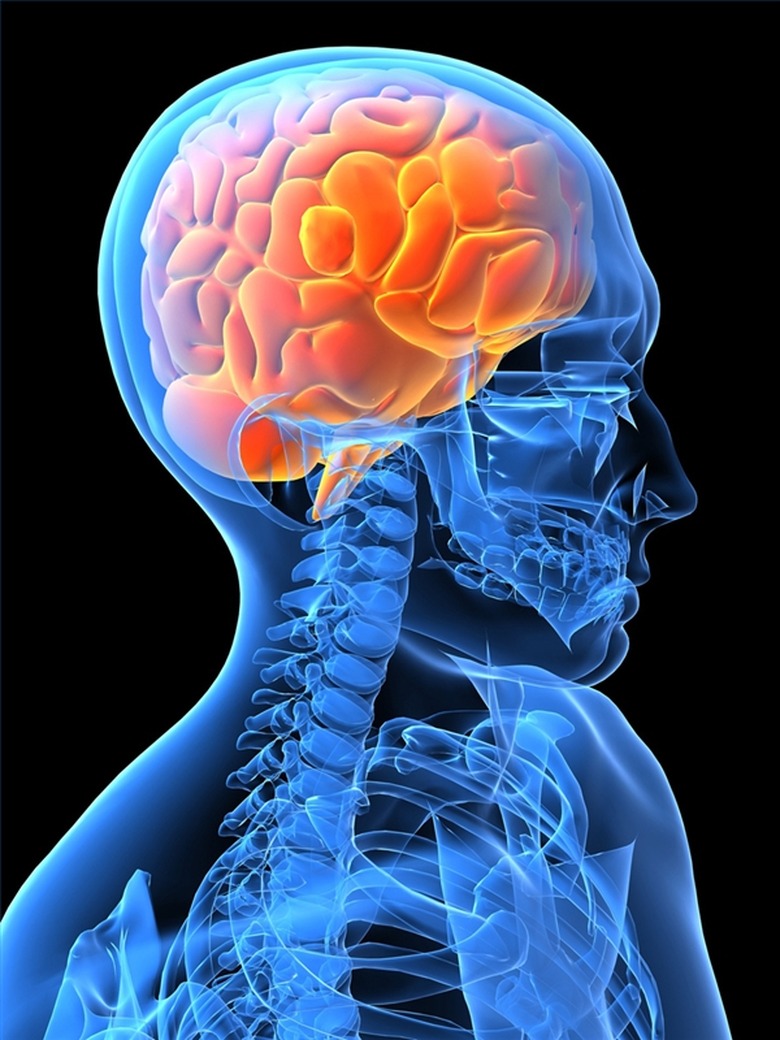What Does The Temporal Lobe Do?
All mammal brains contain two halves, known as the left brain and the right brain. Each side of the brain is then subdivided into four lobes. The brain also has two more structures known as the brain stem and the cerebellum.
Each lobe of the brain is responsible for different functions including sending signals to different parts of the body, understanding information and controlling parts of the body. The temporal lobe in particular is responsible for memory processing as well as understanding and incorporating your senses (particularly smell, sound and sight) into those memories.
The Lobes of the Brain
The Lobes of the Brain
Each side of the brain is made up of four separate lobes. These lobes are called:
- The frontal lobe.
- The parietal lobe.
- The occipital lobe.
- The temporal lobe.
Each of these lobes is responsible for different functions in the body. The frontal lobes, for example, are involved with communication, voluntary movements/actions and cognitive function. The parietal lobes are involved with the processing and understanding of temperature, touch, taste, movement and more. The occipital lobes' main function is to process sight and visual information.
The cerebellum and the brain stem sit at the base of the brain closest to your spinal cord. These structures are responsible for much of your subconscious function (breathing, blood pressure, heartbeat and so on).
The Temporal Lobe: Location
The Temporal Lobe: Location
The location of each temporal lobe is on the sides of the brain almost directly under your temples and behind your ears in the skull. In fact, the temporal lobe is named for the proximity to your temples. Each half of the brain contains a single temporal lobe, meaning you have one temporal lobe on each side of the brain/head.
The temporal lobe is the second largest lobe (the frontal lobe is the largest).
The Temporal Lobe: Functions
The Temporal Lobe: Functions
The proximity to your temples and your ears gives you a clue to one of the main functions of the temporal lobe: processing and understanding sound.
**Auditory processing:** One of the major functions of the temporal lobe is to receive any sound/auditory signals, process those signals and tell you what they mean.
For example, you could be taking a walk and hear a bird chirping. Your ear gets a signal of that bird's chirp in the form of a certain frequency and pitch of sound. Your temporal lobe will then receive that signal, process the sound and "tell" you that it is a bird chirping.
**Speech/language recognition:** If the temporal lobe is responsible for processing sound, it makes sense that it is also responsible for something else you hear: language. A complex within the temporal lobe called the auditory complex is responsible for helping you hear speech, understand what's being said, understand the names of people and objects and more.
**Speech generation:** Besides helping you understand and process speech, sound and language, the temporal lobe is also responsible for helping you speak. The temporal lobe and other parts of the brain work together to help you process and understand visual information, and the temporal lobe also helps you actually speak the words you want to say.
For example, you look at a table and think "table." The temporal lobe helps you actually say, "That's a table" out loud instead of just thinking it.
**Memory:** The other major function of the temporal lobe is memory, specifically auditory, olfactory and visual memories. The temporal lobe works with the limbic system (the hippocampus and the amygdala) to form and store memories both short- and long-term.
The temporal lobe also helps you connect senses to your memories. For example, a certain smell might remind you of a memory you have from your childhood.
This lobe is also responsible for helping you remember verbal, visual and auditory information. This includes processing and remembering what body language means, what certain words mean, object recognition and understanding, and more.
**Visual understanding:** While other parts of the brain, mainly the occipital lobe, are the main processors of your vision and visual stimuli, it's the temporal lobe that helps you process and analyze that information. So while the occipital lobe and other parts of the brain allow you to see a dog or a ball or an acorn, it's the temporal lobe that helps you remember and name those things.
Cite This Article
MLA
Walsh, Elliot. "What Does The Temporal Lobe Do?" sciencing.com, https://www.sciencing.com/what-does-the-temporal-lobe-do-12211276/. 10 June 2019.
APA
Walsh, Elliot. (2019, June 10). What Does The Temporal Lobe Do?. sciencing.com. Retrieved from https://www.sciencing.com/what-does-the-temporal-lobe-do-12211276/
Chicago
Walsh, Elliot. What Does The Temporal Lobe Do? last modified March 24, 2022. https://www.sciencing.com/what-does-the-temporal-lobe-do-12211276/
